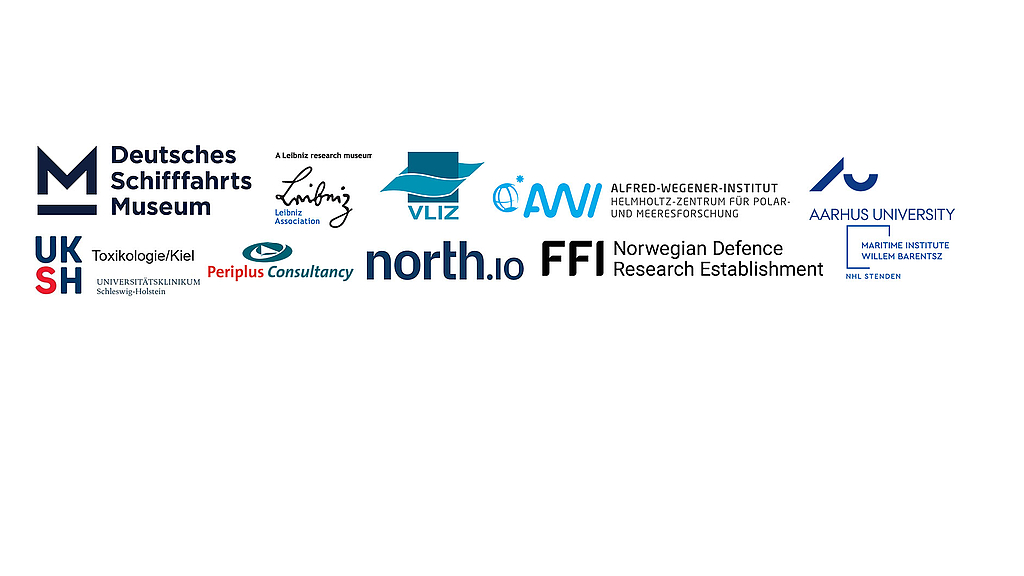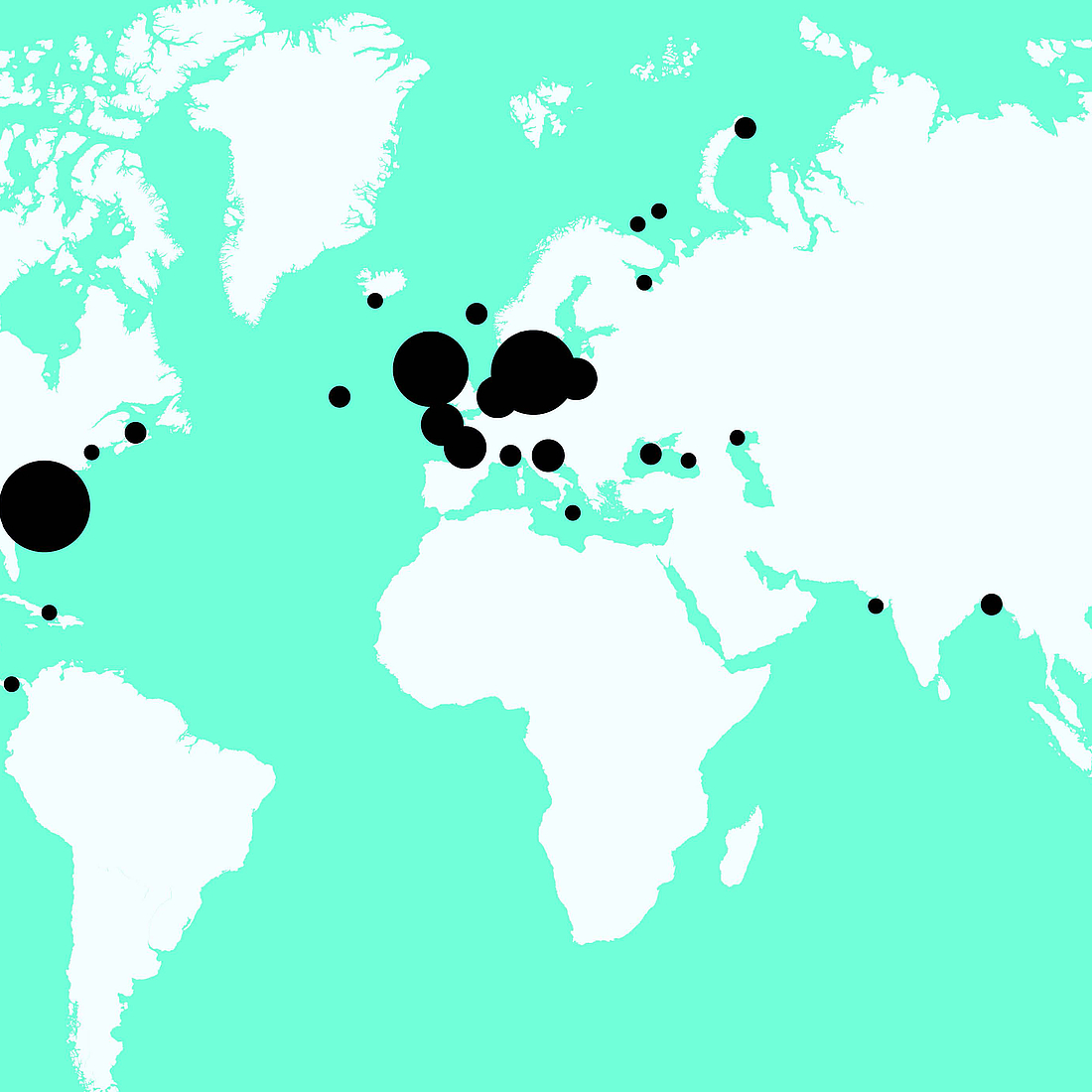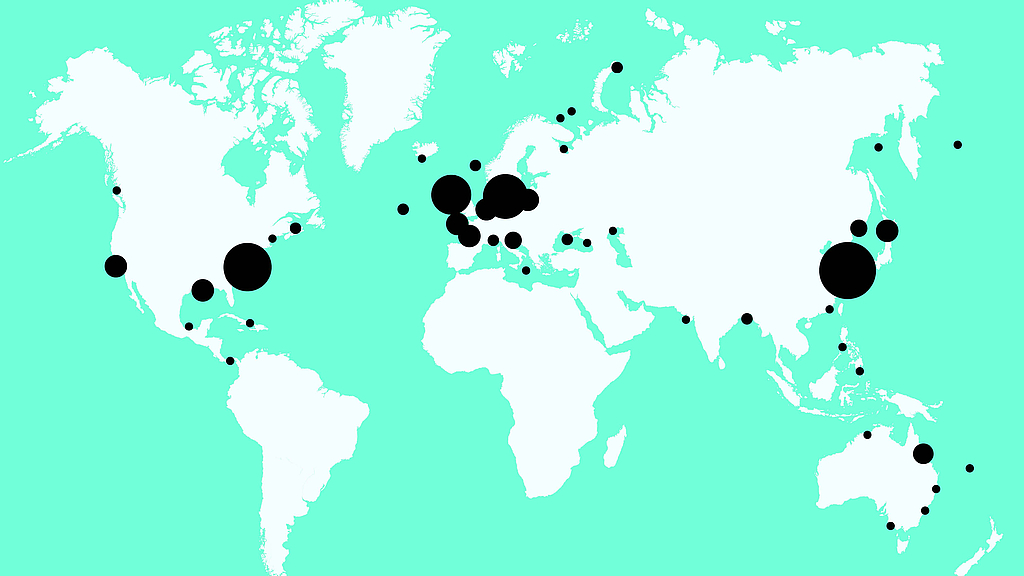Oceans as a dumping ground: out of sight, out of mind
For many years, the seas were viewed as a vast container. They seemed so endless and so deep that they would easily absorb whatever you put in them. Waste on ships, for instance, was simply chucked overboard.
As recently as 1968, the United Nations declared that the seas had huge capacity as a potential repository for waste. In addition to remnants of war (see other text in this section on wrecks and munitions worldwide), this included nitrates and phosphates from agriculture, chemicals, medicines, heavy metals, radioactive waste and oil – as well as sulphuric acid.
This industrial waste product used to be discharged into the sea or dumped from ships. To highlight the practice of sulphuric acid dumping, Greenpeace and other environmental activists launched headline-grabbing protests in the 1980s. Growing public awareness then led Germany to put a stop to the dumping of sulphuric acid in 1990, with the UK following suit in 1993.
For decades, persistent organic pollutants, too, were either dumped at sea or allowed to enter the sea from land, and they are still present in the oceans today. The Stockholm Convention of 2004 resulted in 12 of these substances – known as the “dirty dozen” – being banned.
These pollutants include polychlorinated biphenyls (PCBs), chlorine compounds that were once commonly used in electrical equipment, and the insecticide dichlorodiphenyltrichloroethane (DDT). Despite bans and restrictions, these toxic chemicals are still present in the sea today; in some regions, they are found in worrying concentrations in marine organisms.
Another major problem is the amount of plastics entering the world’s seas, which estimates put at between 4.8 and 12.7 million tonnes for 2010 alone. Some of that is from activities at sea(20%), but a far larger proportion (80%) comes from the land, either entering directly from coastal regions or being carried from more distant areas by rivers or the wind.
Plastics do not fully decompose in the sea, instead they break down into microplastics – into particles that are less than five millimetres across, fragments too small to be removed from the sea. These particles have already been discovered in remote sea regions such as the Arctic or in Oceania, as well as on the seabed at great depths.
Marine microplastics has developed into a research field of its own. Nonetheless, the potential impact of such plastics on ecosystems and biodiversity is still not precisely known. Even though many plastics are not toxic themselves, they act as collectors of toxic substances such as DDT and PCBs, as well as of harmful bacteria that are thus able to enter marine food chains.
As with microplastics, it is difficult to make definite statements about long-term environmental harms based on our research into the dangers of corroding munitions and TNT leaks. All the same, these investigations are still important because, by improving our understanding of such pollution, they can help to protect marine environments.
There can, though, be no doubt that using the sea as a sink for all kinds of waste products and pollutants was a bad idea – not least because the sea is not a sealed receptacle; pollutants such as TNT or DDT can spread freely in marine environments and thus enter food chains too.
Because they take place more gradually than rapidly unfolding catastrophes, such phenomena are known as “slow disasters” – and it is often impossible to predict the impacts they will have on people and places.
Allowing hazardous objects or substances to be dumped or stored in or otherwise introduced into the sea can thus only be seen as an ill-fated experiment. The resulting pollution of our marine environments is a disaster that will continue to unfold – unless something is done about it today.
further literature
Bergmann, Sven. 2021. Dawn of the Plastisphere: An Experiment with Unpredictable Effects, In: Farrelly, Trisia, Sy Taffel, Ian Shaw, ed. Plastic Legacies: Pollution, Persistence, Politics. Edmonton, CA: Au Press, doi.org/10.15215/aupress/9781771993272.01 (open access).
Jambeck, Jenna R, Roland Geyer, Chris Wilcox, Theodore R Siegler, Miriam Perryman, Anthony Andrady, Ramani Narayan, und Kara Lavender Law. 2015. „Plastic waste inputs from land into the ocean“. Science 347 (6223): 768–71, https://doi.org/10.1126/science.1260352.
Mendelson, Ben. 2020. „Kranke Fische“. Der Freitag 42, https://www.freitag.de/autoren/benmen/1980-kranke-fische (open access).
Nash, Roisin, Malcolm Deegan, Elena Pagter, und João Frias. 2021. Microplastics in the marine environment: Sources, Impacts & Recommendations, https://research.thea.ie/handle/20.500.12065/3593 (open access).
WBUG (German Advisory Council on Global Change). 2013. World in Transition: Governing the Marine Heritage, https://www.wbgu.de/en/publications/publication/world-in-transition-governing-the-marine-heritage (open access).
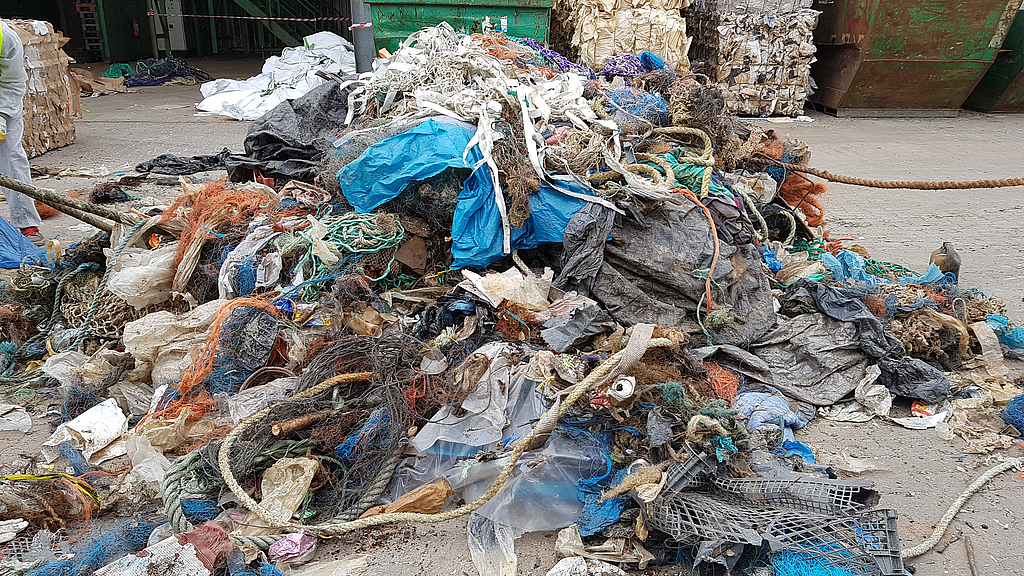
Plastic litter recovered from the North Sea as part of the Fishing for Litter campaign. Photo taken during litter monitoring in June 2019. © Sven Bergmann, German Maritime Museum
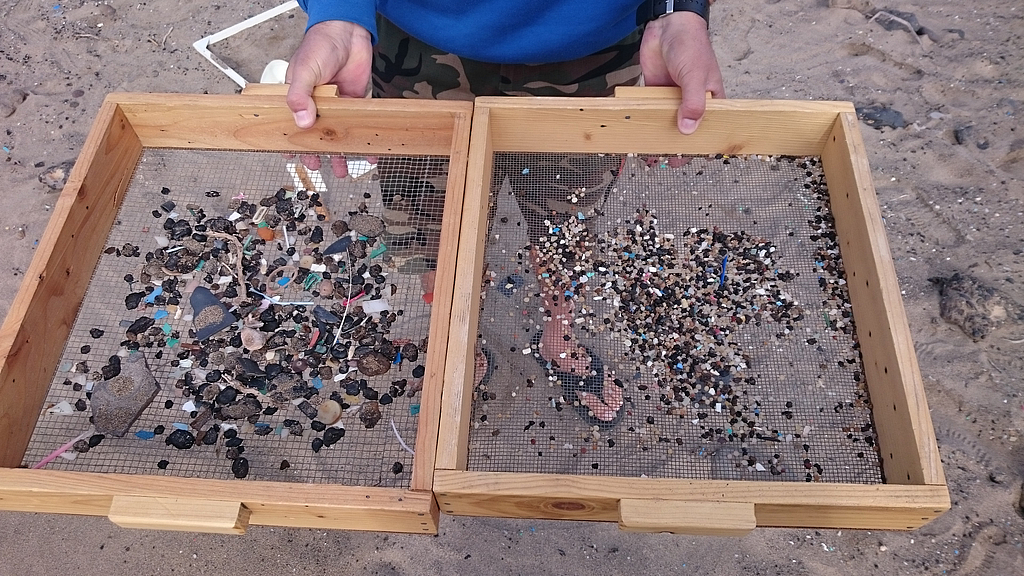
Macro- and microplastic sifted from a transect of one square metre from the sand on the beach in Famara (Lanzarote), December 2018. © Sven Bergmann, German Maritime Museum
Partner
-